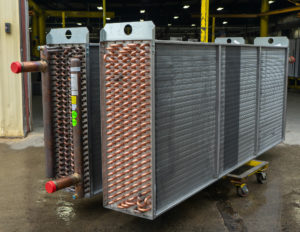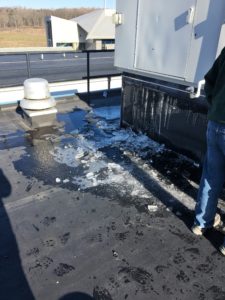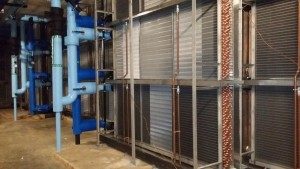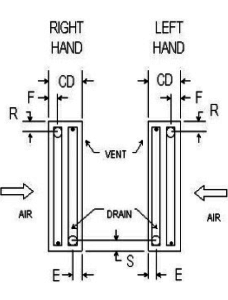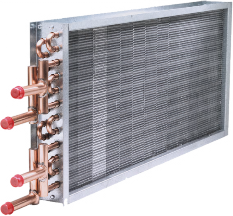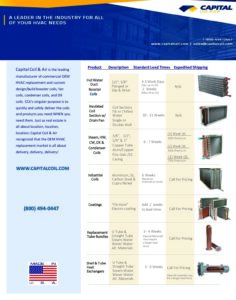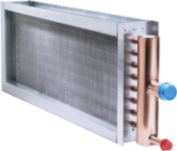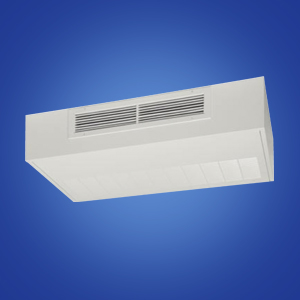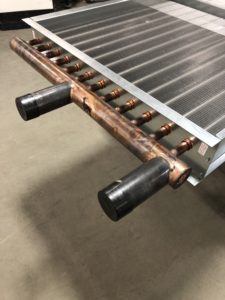Replacement DX Coils: To those not aware, Kennett Square, PA is the mushroom growing capital OF THE WORLD! Kennett Square is also located quite close to Capital Coil’s sales office in West Chester, PA, and we get multiple requests per month to personally come out and measure DX coils that need to be replaced at these farms.
Mushrooms need a well-ventilated growing environment, and poor ventilation can lead to higher levels of CO2. Higher CO2 levels negatively affect mushroom quality and growth. Ensuring proper air circulation is essential for maintaining healthy crops. Mushrooms also thrive in high-humidity environments, but excessive moisture can also lead to mold or bacterial growth, which can damage the entire crop. Proper humidity control is crucial to maintaining the right balance and preventing costly losses. To tackle these problems, growers need reliable climate control systems, and that’s where Capital Coil steps in.
Mushroom cultivation, while lucrative, is not without its challenges. Running climate control systems for mushroom farming can be expensive, especially when using inefficient equipment. High energy costs can eat into profits, particularly for smaller, family-owned operations. One of the biggest challenges for mushroom farmers is making sure that the coils are working at peak efficiency because the conditions in and around those farms will corrode the aluminum fins at a faster pace than most other environments. As mentioned above, there are very specific conditions that need to be maintained for a successful crop, so the coils in the condensing systems that are needed to sustain those conditions have to be working at all times.
One farm had been trying to repair numerous coils through different “band-aid” methods. None of these attempts worked, and the farm’s energy costs had skyrocketed when trying to get the same capacity from a failing coil. One of the neighboring farms that had used us for numerous DX coil replacements recommended that they call Capital Coil to come out and assess the failing coils.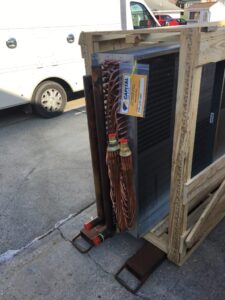
After looking at a few of the units, most of the coils’ finned area had been eaten away by corrosive elements in the air. The OEM had not recommended any protection for the coils, which was why they failed far sooner than they should have. The new coils were to be installed in the original units, so the measurements needed to be exact. I also explained to them that any new coil(s) needed to either have more durable materials, such as stainless-steel casing and/or copper fins, or a protective coating for the whole coil. If not, these same issues would continue to occur.
The farm decided to order (1) DX coil with an epoxy coating as a “test” before ordering the rest. The new DX coil arrived a few weeks later and was a perfect match for the original unit. A year later it was still running at max capacity with zero damage to the finned area because of the coating.
Due to the speed that we were able to come out to the site, correctly assess the reasons for the coil failures, and make recommendations on increasing the coil’s longevity, they decided to order the remaining batch of DX coils from Capital Coil & Air. They also recommended us to many of the other farms in the area, so Capital Coil is now the main HVAC coil replacement company for many of the largest mushroom farms in the United States.
RELATED POSTS
OEM Replacement Coils: Repair or Replace
